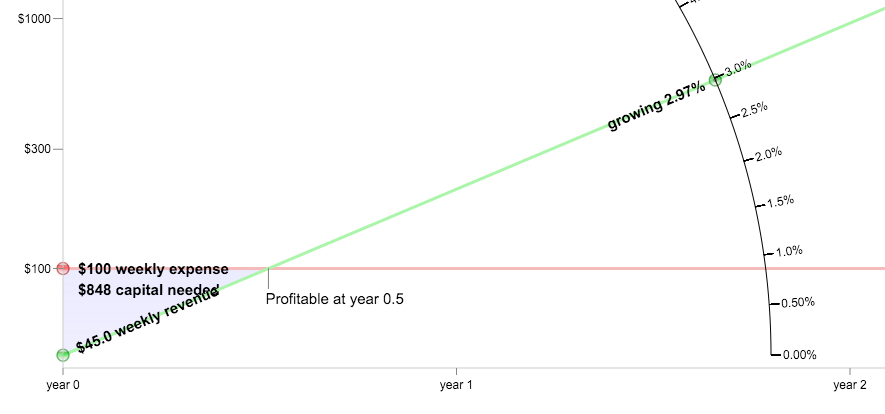Holy crap it's March
March has definitely snuck up on me this year. Maybe partially because I have a lot of other work to do right now, days can be a bit of a slog to wake up, figure out which contract needs attention, build stuff all day, sleep, repeat. I definitely need to mix my days up a bit which was my intention when I said I was going to work out of some different locations a few weeks ago. Still have not gotten around to figuring out where those places are or when I would do this 😁
I made a few small tweaks to
SPI Websockets
to move the frame timing back to where it should be (in the spi package) but I’m still messing around with what designs I can actually build with it. I have to make a gif of the real thing vs the sim display before I can open source it. Afterwards I’m not sure about when I’ll get around to building something in it.
My first That Thing in Swift livecoding event was last week and went way better than expected. I built a small project in a little over an hour, had roughly 10 concurrent watchers the whole time and got some good feedback on Twitter afterwards. I did some digging into how to improve my setup afterwards and it seems cheap and straightforward to make some big steps up in quality, though I’m still not completely sold on the format. 1 hour is a long time to commit to watching a video!
I’m going to produce a few small (non-live) videos to go along with the most popular pages on the site (notably Singletons and Background threads) and post those at the top of the page in a new That Thing in Swift youtube account, we’ll see how many views and subscribers that gets us. Then we’ll figure out where to go from there!
Lastly on the project updates, I realized that I know very little about how Solar cell research actually produce power. I get the photoelectric/voltaic effect but there’s a big difference between knowing that physical process versus how to turn it into functioning electricity. I’m keeping notes on everything I learn and I’ll hopefully wrap it up in some regular posts here.
Treat has finally made its way to the archived pile. I still think the core idea is awesome, there’s just no great hook for why you want to use it in the first place. Surprisingly (to me), the fact that people use gift cards is not enough to justify the same people wanting to do the same thing (but better, obviously) on their phone. It’s still in the back of my mind and there are a few small things I want to do work on to feel out some assumptions but it’s not going to happen for a few months.
A big takeaway from the project is that I got wrapped up in this Startup culture and let those norms decide how I would build a company.
One thing that has really resonated with me since then has been this great, simple Startup Growth Calculator from @tlbtlbtlb. Here’s a shot of the model that makes sense with how I work:

All the things on this chart are concrete and achievable. Spend $100 weekly? That’s way more than I usually spend to acquire users, initial investment for an engineer on their own project is mostly time. $45 weekly revenue? That might not be achievable on day 1 but it’s a low target that should be easy to hit if your project has any merit at all (no, I don’t want to make a “free” product where the customers are actually advertisers). 3% growth? That’s minuscule for a startup.
Let’s push the “profitability” back by 6 months since you’re not making $45 a week immediately. That’s still a single year to get to profitability, incredible. I know this is a simplistic model and you’ll probably want to grow faster by reinvesting or getting new investment during this time scales but this is what my year 1 plan should be for any project that I want to make money on. And your starting investment in the project is time and not quite $2000, not even enough to get your halfway through this month’s rent in SF.
The best part is all the way on the right (outside the frame of this screenshot) where it says “$100M/yr revenue at year 7”. If you’re on track for $100M/yr, there’s nothing that can stop you.